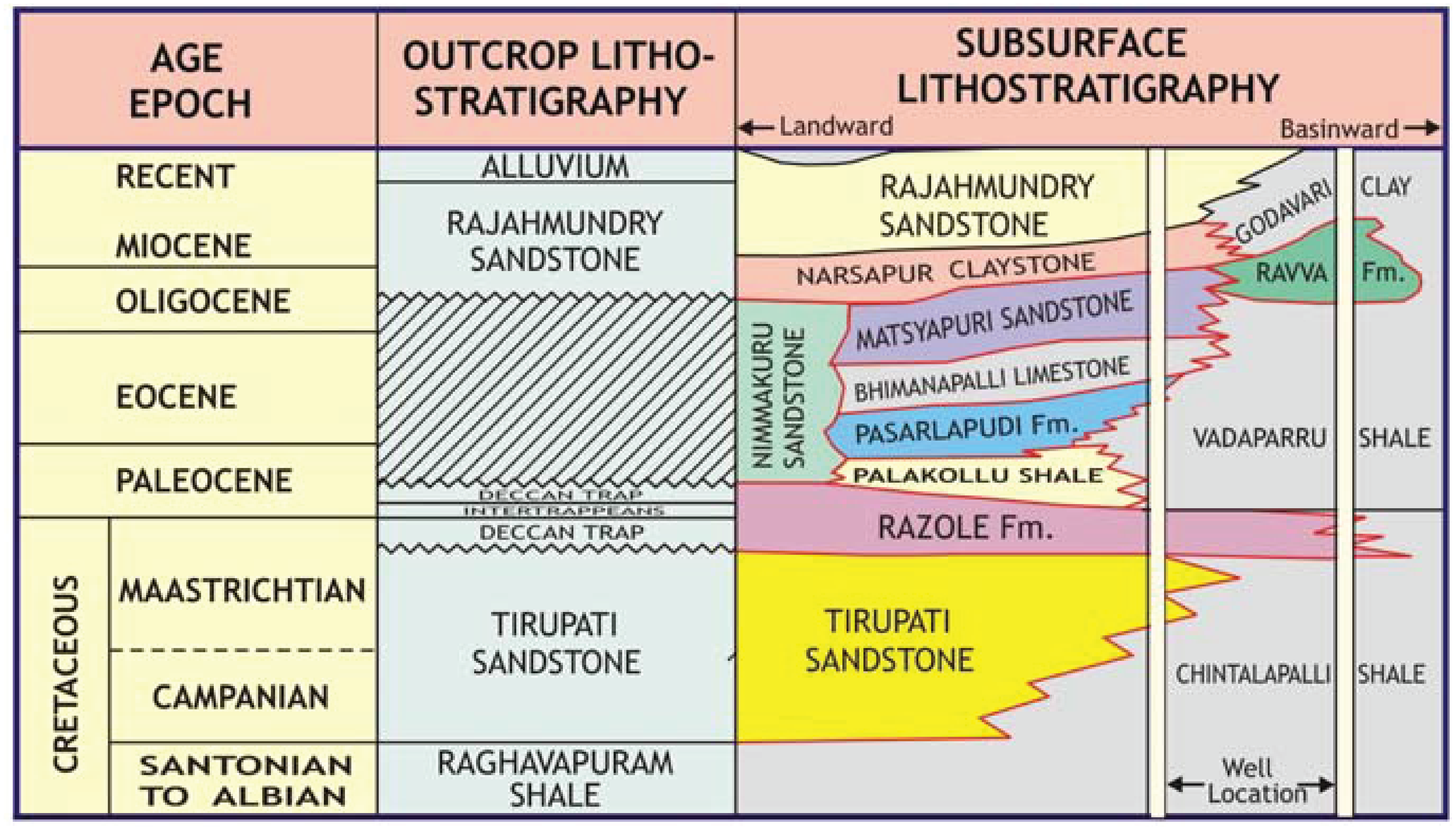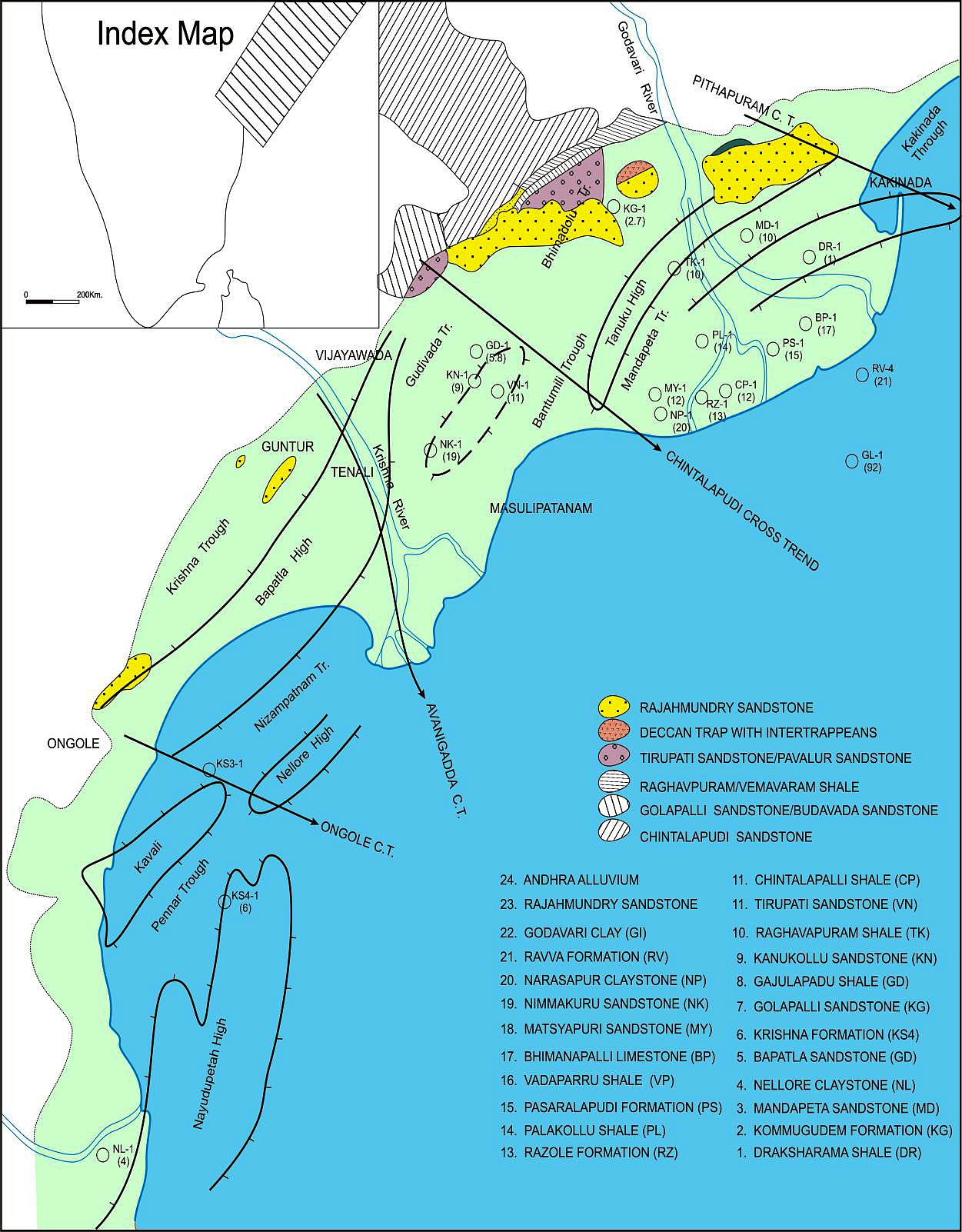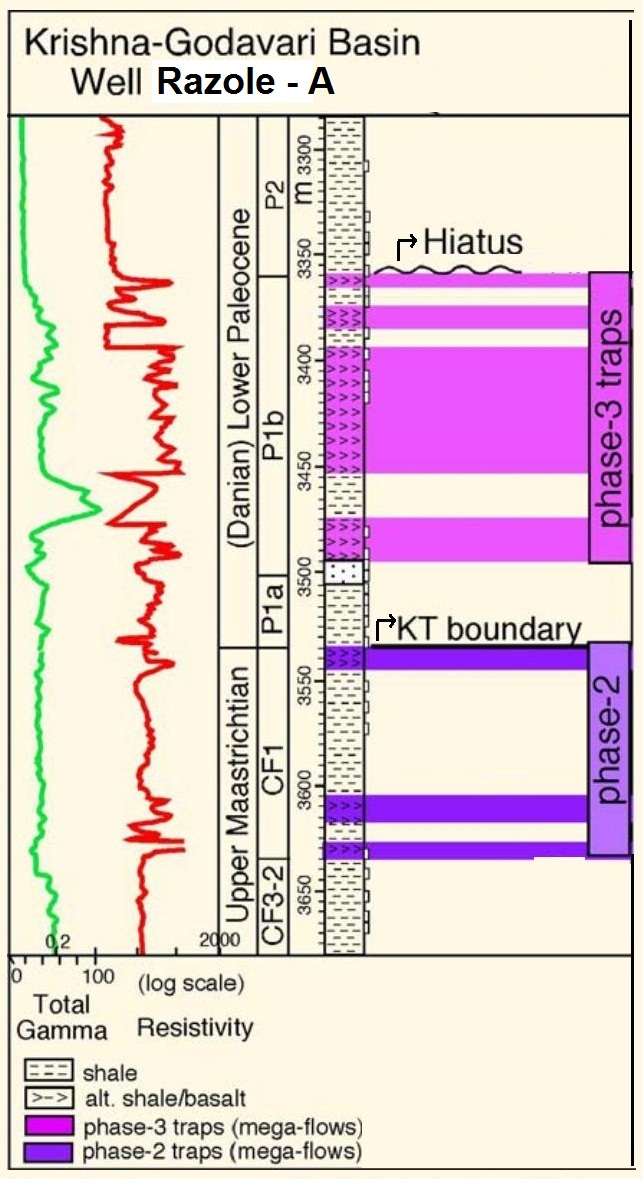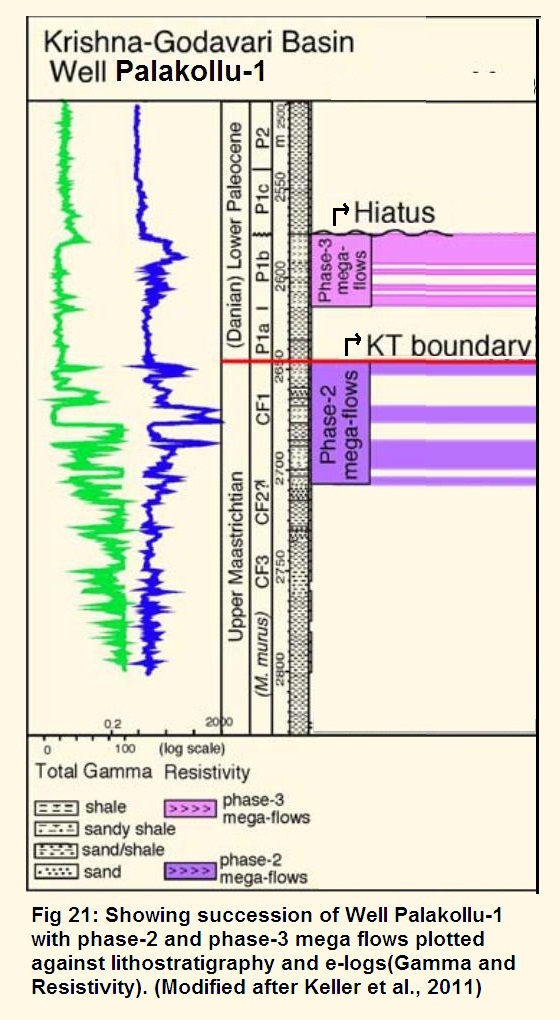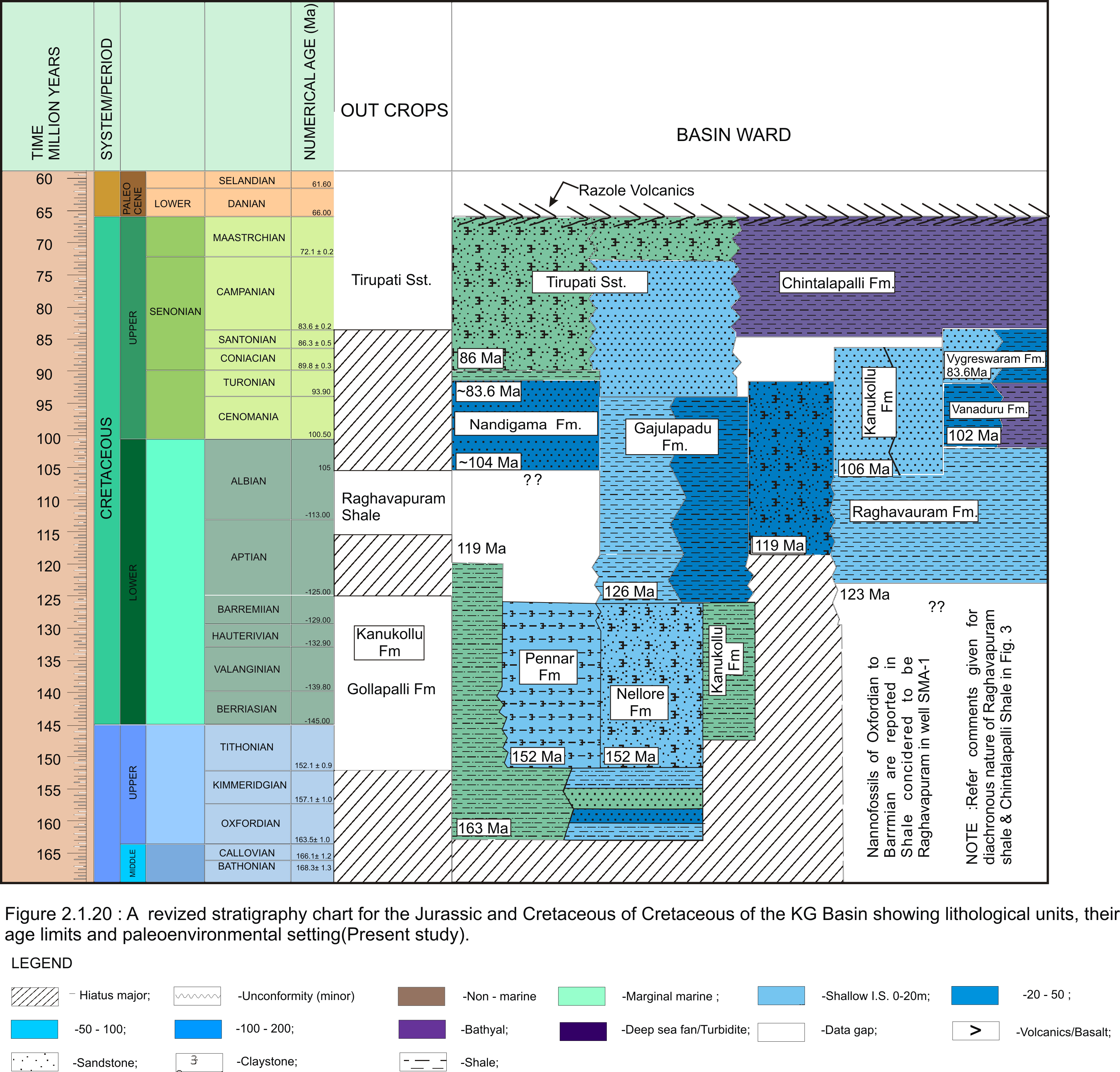Razole Fm
Type Locality and Naming
This formation is named after the well Razole-1 where it is well developed. The type section is in Well Razole-A (depth interval: 3365-3635 m). The hypostratotype is in the well Palakollu-A (depth interval: m). It was named after the Razole village by ONGC team steered by Venkatarengan et al. (1993) adopted and issued as Document-VII by KDMIPE, ONGC, Dehradun (1993). [Original Publication: Rao, G.N. (1990) Subsurface stratigraphic nomenclature of Krishna-Godavari Basin, ONGC, unpublished report.]. Reference well: Well Chintalapallli-1, interval 3590-3940 m, Well Palakollu-A (Keller et al., 2011)
Synonyms: Deccan Traps Fm
[Figure: Generalized Late Cretaceous-Cenozoic lithostratigraphy transect, Krishna-Godavari Basin. From Keller et al., 2011, Jour. Geol. Soc. India, 78:399-428, their Fig. 2]
[Figure: Map showing the locations of designated holostratotype section for the formation in the KG Basin (After ONGC, Pandey and Dave, 1998) in Raju et al., 2021, ONGC Bulletin, Special Issue, Vol. 56, No. 2]
Lithology and Thickness
Lava flows. Part of Deccan Traps Fm large igneous province. The type section consists of basalts, which are melanocratic, dark grey, greenish-grey, showing occasional conchoidal fractures. Fractures are filled by calcite, zeolite and chlorite. The inter-trappean horizons are mainly clays of light gray color. It has a thickness varying from 270 m.
[Figure 1: Showing a succession of well Razole-A, phase-2 & phase-3 megaflows plotted against lithostratigraphy and e-logs (gamma and resistivity). (modified after Keller et al.,2011)]
[Figure 2: Showing a succession of well Palakollu-A with phase-2 and phase-3 megaflows plotted against lithostratigraphy and e-logs (Gamma and Resistivity). (modified after Keller et al., 2011)]
[Figure 3: A revised stratigraphy chart for the Jurassic and Cretaceous of the KG Basin showing lithological units, their age limits and paleoenvironmental setting (present study) in Raju et al., 2021, ONGC Bulletin, Special Issue, Vol. 56, No. 2]
Relationships and Distribution
Lower contact
Conformable with the Chintalapalli Fm / Tirupathi Fm.
Upper contact
Unconformable with the Palakollu Formation shale
Regional extent
It extends from the outcrops areas and Duddukuru. Extension of Deccan Traps Fm large igneous province.
GeoJSON
Fossils
In holostratotype section, R. furcticosa, C. contusa, P. palpebra and G. daubjergensis. In hypostratotype section: R. fructicosa, C. contusa and G. daubjergensis, P. eugubina and P. psueudobulloides.
Age
Additional Information
